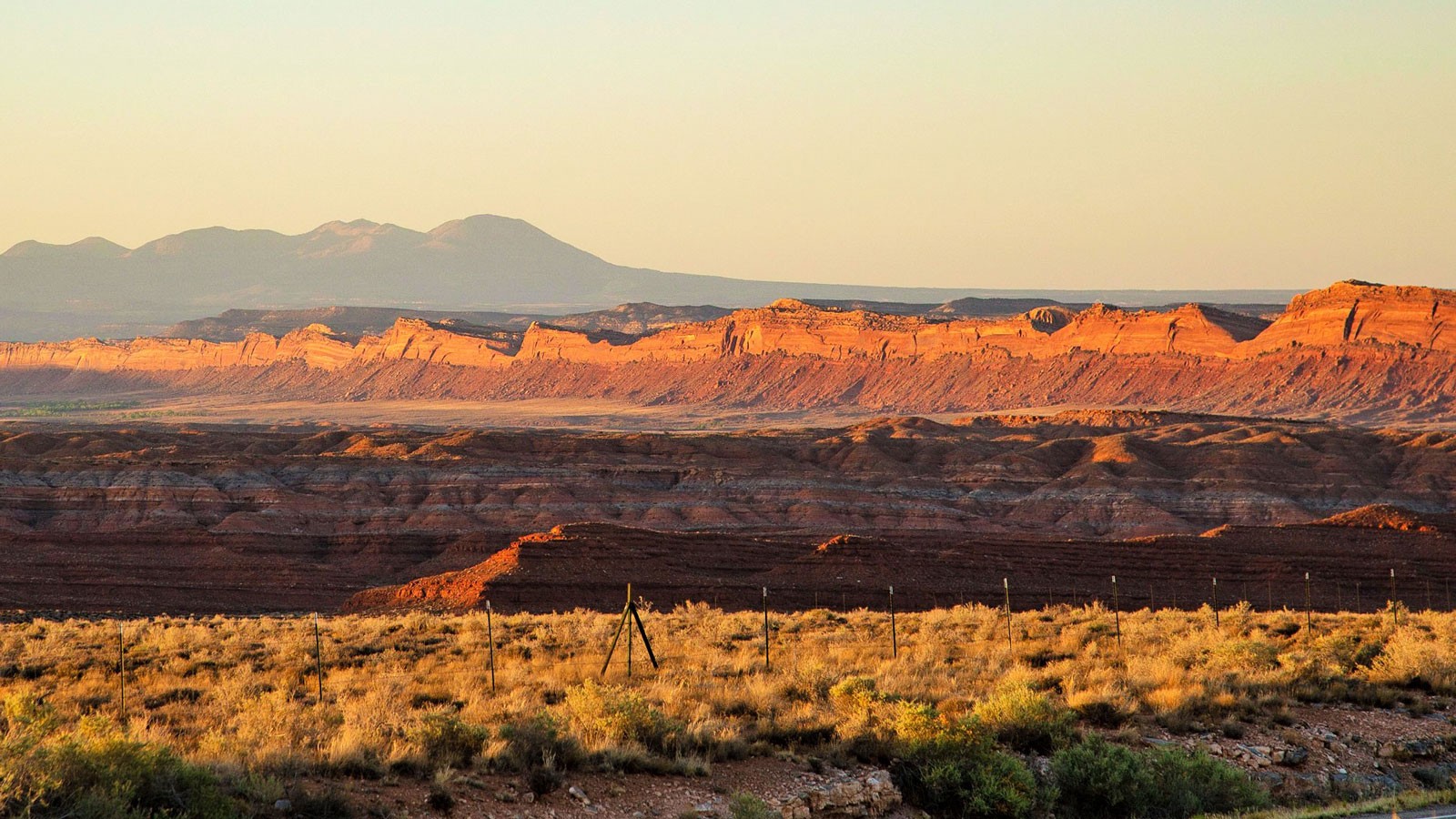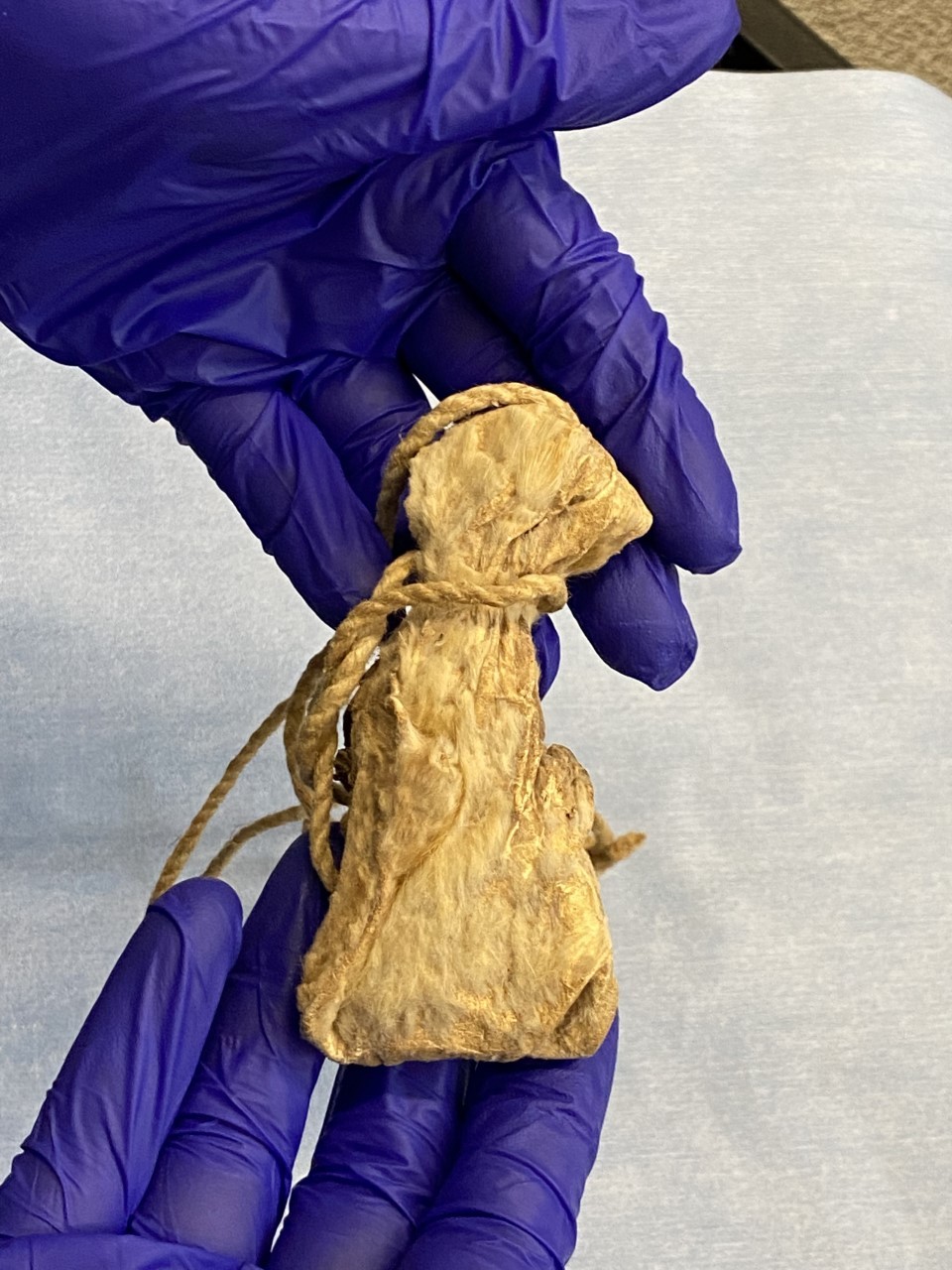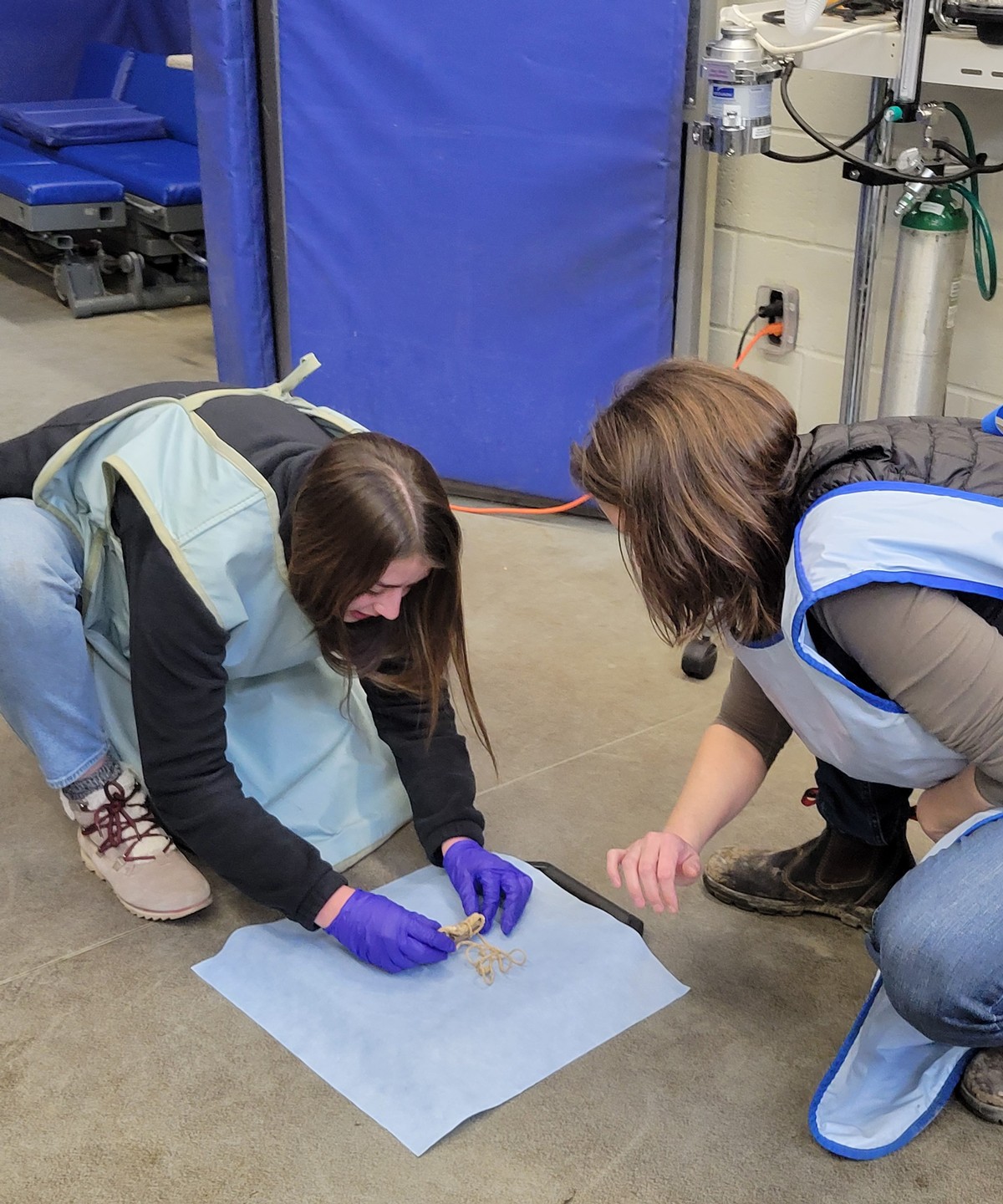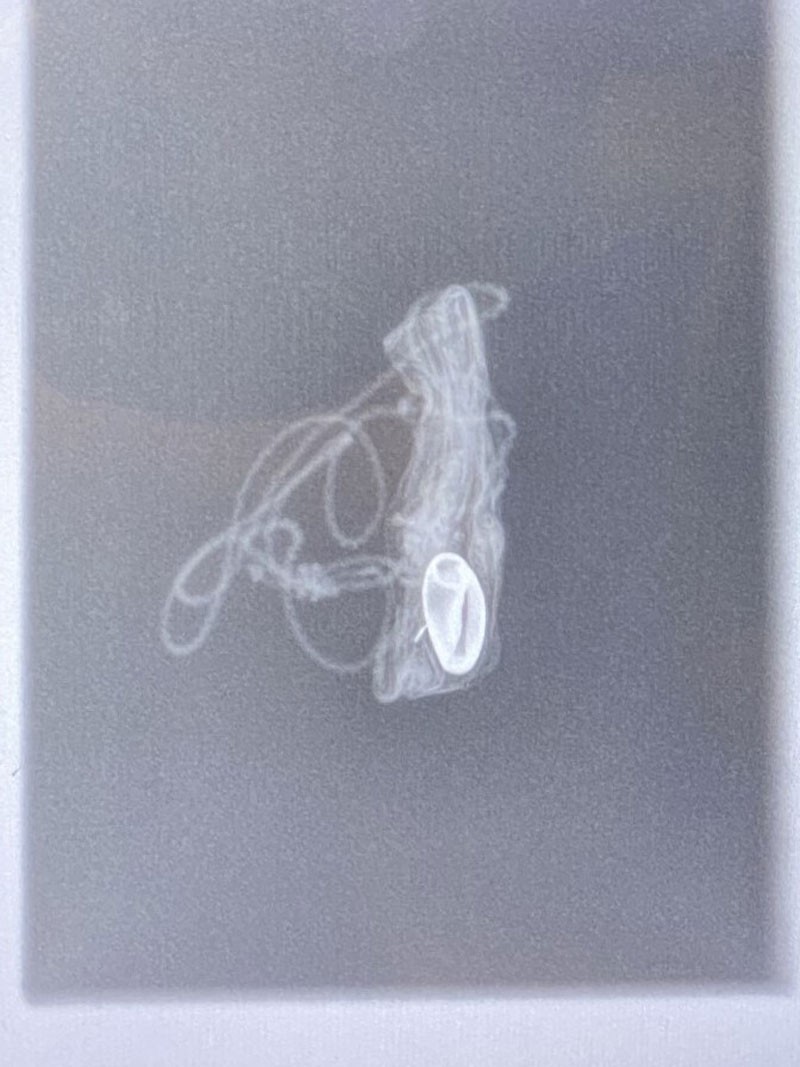USU Anthropology Student, Vet Med Faculty Identify Object in Centuries-Old Indigenous Pouch
By Ethan Brightbill |
Comb Ridge in the Cedar Mesa area of San Juan County. (Photo Credit: Utah Office of Tourism)
Anthropologists sometimes work with animal remains in the course of understanding how human societies lived, but they rarely cross paths with veterinarians, who focus on treating living animals. However, when anthropology graduate student Alexandra Wolberg needed to analyze an unusual Indigenous pouch without damaging it, the College of Veterinary Medicine had a unique opportunity to support one of Utah State University’s anthropologists.
Wolberg began her work with the pouch as part of Assistant Professor Anna Cohen’s archaeometry class, where she was tasked with studying an item from the USU's Museum of Anthropology’s Keller Collection. The collection includes numerous artifacts from the Ancestral Puebloans, an Indigenous group from whom modern Puebloan tribes are descended.
The item she selected for analysis was a pouch found in the Cedar Mesa area of San Juan County, Utah, in 1965. Made from leather and decorated with white animal fur, the artifact had a 1-inch cut on its side that revealed a smooth white object inside.
“We didn’t know what was in the pouch,” Wolberg said. “The database said it was a pebble, but we weren’t sure.”
The pouch was believed to date from somewhere between 300 and 1250 A.D., so Wolberg couldn’t just reach into the bag to find out what was inside. While the artifact was well-preserved, the centuries have left it fragile enough that any attempt to untie its cordage or move the object within could cause permanent damage.
When considering methods of examining the pouch, Wolberg also had to consider the Native American Graves Protection and Repatriation Act. Assistant Professor Molly Cannon, the director and curator of the USU Museum of Anthropology, explained that NAGPRA governs how archaeological collections of Native American descent are managed and cared for — and in some cases, given back to Indigenous communities.
“We're currently going through the Keller collection to identify items that fall under NAGPRA and consult with tribal members to determine if those items should be returned,” Cannon said. “Objects like this pouch could be considered objects of cultural patrimony, or sacred objects, covered under this legislation. Many people think of NAGPRA in terms of human remains, and it certainly protects them, but it applies to other objects as well.”
To prepare for the tribal consultation, Wolberg needed to learn more about the pouch while maintaining its integrity. Cannon recommended using X-rays to identify the object in the bag, and Cohen suggested turning to other USU departments for equipment and expertise. After making some calls, Wolberg turned to the Bee Biology and Systematics Laboratory (BeeLab), which is a partnership between USU and the U.S. Department of Agriculture, and Dr. Holly Clement of USU's College of Veterinary Medicine.
Clement is an associate professor specializing in equine reproduction, lameness and preventative medicine at the Sam Skaggs Family Equine Education Center. When Wolberg reached out to the College of Veterinary Medicine for help, Clement had just the tool for the job: a portable X-ray machine about the size and shape of a suitcase.
“Our radiology equipment is regularly used to image rodents, horses and everything in between,” Clement said. “Radiographing this pouch was very straightforward, since unlike most of our patients, it was a still object. We took special care in handling the artifact with gloves and placing a clean drape over the X-ray plate to limit possible contact damage to the pouch.”
Clement, Wolberg, and research technician Sarah Pierce were able to image the mysterious object inside the pouch. In conjunction with X-rays performed at the BeeLab and a digital microscope at the USU Museum of Anthropology, the results revealed that it wasn’t a white stone at all. Instead, it appeared to be a seashell that had made its way inland to Utah.
The findings surprised Wolberg, but she learned of a promising explanation for the shell when she spoke to Associate Professor David Byers, another anthropologist at USU. He suggested that it could be from the genus Olivella, a type of sea snail often found in tropical and subtropical seas and oceans.
The question for Wolberg then became how to confirm that theory.
“Looking through the literature,” Wolberg said, “I found that people would shave off the top of the apex of the shell to turn it into a bead or pendant. And from the X-rays, you can see that the pointy part of the shell is shaved down. With that distinctive marker as well as the color matching up, I feel fairly confident saying that it's an Olivella shell.”
Olivella shells can be found in the Pacific, Atlantic, and Gulf of Mexico, so it’s not clear where this particular shell came from. However, archaeologists have found evidence of extensive trade networks that carried Olivella shells and other goods from modern day California and Mexico, across the Great Basin and Arizona, and to the Four Corners region — including Utah — and beyond.
“This shell would have been considered an exotic item,” Wolberg said. “It's not something that you could simply walk 100 miles and go get. It's something that had to be traded into your cultural area.”
The value of the shell increases the likelihood that the pouch is an important cultural or religious artifact, which may place it under the protection of NAGPRA.
“The results may change our understanding of the function of the pouch, and that's where it becomes sensitive,” Wolberg said. “When it was just a pebble, I think we could have confidently said it was only a leather pouch. But now that there's this exotic shell in it, that kind of changes things a bit. I've been doing so much research, and I'm having a hard time deciding whether I think it may be a sacred object.”
Wolberg’s final report will help tribal representatives answer the question of where the pouch belongs. Additionally, it supports the scientific consensus that the Ancestral Pueblo people of Utah were part of a larger cultural umbrella that covered the Four Corners area. Together with other Indigenous peoples, the Ancestral Pueblo formed networks of economic and cultural exchange that spanned hundreds of miles.
The report helped answer questions about the physical nature of the pouch as well. The revelation of the Olivella shell placed the pouch’s age between 700 and 1500 A.D., during a period of heightened trade in shells in the area. Drawing on her professional experience, Clement was also able tentatively identify the pouch’s white fur as coming from a rabbit. Tests to confirm that theory would require destroying some of the material, so Clement’s educated guess is likely to be the last word on the subject.
While the collaboration between Wolberg and the College of Veterinary Medicine marked a first for USU, it was in many ways a normal part of how anthropologists and archaeologists draw on knowledge and techniques from other fields to study humanity’s past.
“Archaeology is interdisciplinary,” Cohen said, “and we use scientific methods to address questions about cultural and human-environmental processes in the past.” She explained that other students in her archaeometry class previously worked with experts in biology, geosciences, natural resource management, and more.
For Wolberg, working with Clement highlighted the collaborative possibilities at Utah State.
“Everyone was so open to helping me,” she said. “I just sent them a quick email asking if they had an X-ray, and they said, ‘Sure, let's do it.’ And now we have these wonderful ladies who are willing to work with us on future projects.”
Clement also came away from the project with a positive experience.
“It was really fun to work with Alexandra,” Clement said. “Her enthusiasm for her work and care for the artifact were refreshing. It was a welcome reminder that serving humans is really at the heart of veterinary medicine.”
A pouch from USU's Museum of Anthropology is thought to be made of rabbit skin and dates to 700 to 1500 A.D.
Graduate student Alexandra Wolberg and Associate Professor Holly Clement prepare the pouch for imaging. (Photos courtesy of Alexandra Wolberg)
X-rays revealed a shell inside of the sort that were traded among Indigenous people. (Image Credit: USU/College of Veterinary Medicine)
WRITER
Ethan Brightbill
Writer and Marketing Assistant
College of Veterinary Medicine
Ethan.Brightbill@usu.edu
CONTACT
Anna Cohen
Research Assistant Professor
Department of Sociology, Social Work and Anthropology
(435) 797-797-0270
anna.cohen@usu.edu
Alexandra Wolberg
alexandra.wolberg@usu.edu
Holly Clement
Clinical Assistant Professor
Equine Reproduction, Lameness and Preventative Medicine
435-890-9008
holly.clement@usu.edu
TOPICS
History 138stories Animals 89stories Anthropology 41storiesComments and questions regarding this article may be directed to the contact person listed on this page.













